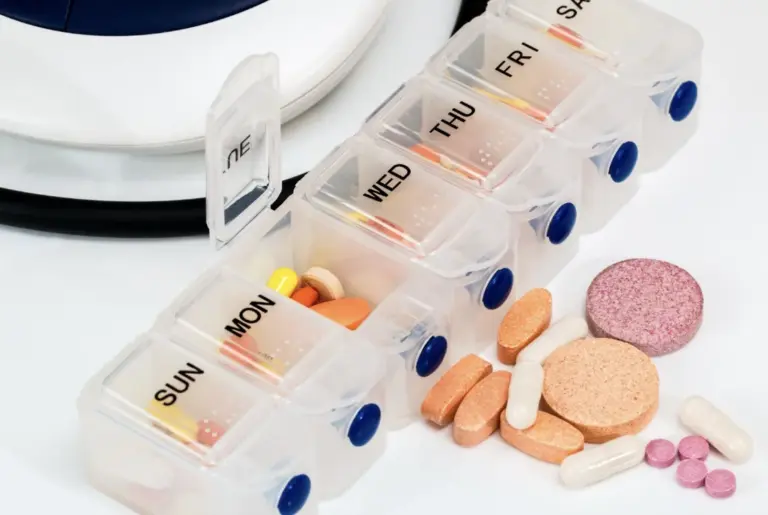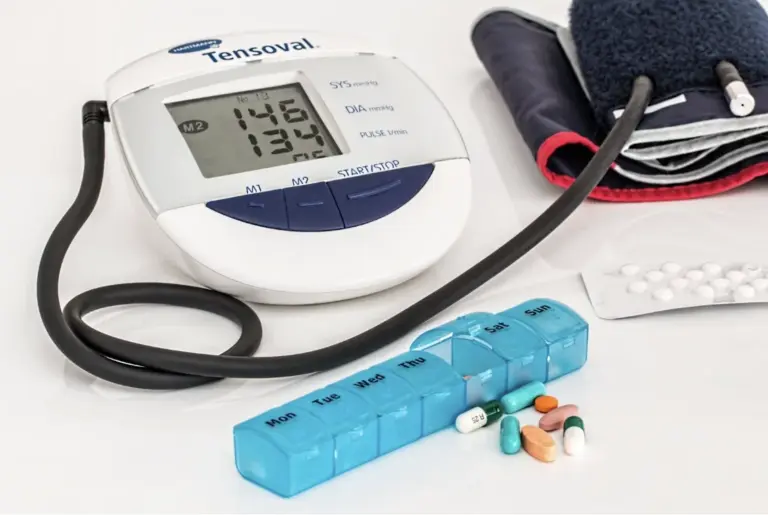When it comes to our health, one of the most crucial but often overlooked aspects is our blood pressure. We often hear about “systolic” and “diastolic” blood pressure, but what do diastolic and systolic pressure really mean, and why are they so important?
In this article, we’ll delve into the world of blood pressure, exploring what it is, how it’s measured, and why it matters.
What Is Blood Pressure?
First and foremost, let’s get a grasp on what blood pressure actually is. Blood pressure is the force exerted by the blood against the walls of our arteries as it flows through our circulatory system. It’s measured in millimetres of mercury (mm Hg) and is typically presented as two numbers, such as 120/80 mm Hg.
Now, let’s break down these numbers and understand what they signify.
What is Systolic Blood Pressure?
The top number in a blood pressure reading is known as the systolic blood pressure. It represents the pressure in your arteries when your heart beats and pumps blood into your circulation. This is the moment when your heart muscle contracts and pushes blood out to the rest of your body.
A normal blood systolic pressure reading falls within the range of 90 to 120 mm Hg. Readings above this systolic bp range can indicate high blood pressure, which can increase the risk of heart disease, stroke, and other health issues. On the other hand, consistently low systolic blood pressure can lead to dizziness, fainting, and insufficient blood supply to vital organs.
What is Diastolic Blood Pressure?
Now, let’s shift our attention to the bottom number in a systolic and diastolic blood pressure reading, which is the diastolic blood pressure. Diastolic pressure occurs during the heart’s resting phase, specifically between beats when the heart muscle is relaxed and filling with blood.
A typical diastolic blood pressure reading ranges from 60 to 80 mm Hg. Elevated diastolic bp range can suggest an increased risk of heart problems and organ damage. Conversely, consistently low diastolic blood pressure could result in inadequate blood supply to the coronary arteries, leading to heart problems.
Understanding Blood Pressure Readings
Understanding your systolic and diastolic blood pressure readings is essential for maintaining good health. Let’s consider a typical reading, such as 120/80 mm Hg. The first number (120) represents the systolic blood pressure, while the second number (80) represents the diastolic blood pressure.
- Normal Blood Pressure: A reading of 90 to 120 mm Hg for systolic and 60 to 80 mm Hg for diastolic is generally considered normal. It indicates that your heart and arteries are functioning well.
- Elevated Blood Pressure: If your systolic blood pressure ranges between 121 and 139 mm Hg, or your diastolic pressure is between 81 and 89 mm Hg, it’s considered elevated. This can be a precursor to high blood pressure.
- High Blood Pressure (Hypertension): A diagnosis of hypertension is made when your systolic blood pressure consistently reads 140 mm Hg or higher, or your diastolic bp range is 90 mm Hg or above. This condition requires medical attention and lifestyle changes to manage effectively.
- Hypotension (Low Blood Pressure): If your blood systolic pressure is consistently below 90 mm Hg or your diastolic pressure is below 60 mm Hg, you may have low blood pressure. It can lead to dizziness and fainting and can require medical evaluation.
Factors Affecting Blood Pressure
Blood pressure isn’t a static number; it can fluctuate due to various factors. These include:
- Lifestyle Choices: Diet, physical activity, smoking, and alcohol consumption can all influence blood pressure. Maintaining a healthy lifestyle can help keep your blood pressure in check.
- Age: Blood pressure tends to rise with age. Regular monitoring becomes more crucial as you get older.
- Stress: Mental and emotional stress can temporarily increase blood pressure. Learning stress management techniques can help mitigate its impact.
- Genetics: Family history plays a significant role. If your parents or siblings have high blood pressure, you may be at greater risk.
- Underlying Medical Conditions: Conditions like diabetes, kidney disease, and hormonal disorders can affect blood pressure regulation.
Measurement Techniques
Accurate blood pressure measurement is vital for diagnosing and monitoring hypertension. There are two main methods for measuring blood pressure:
1. Manual Measurement:
Typically performed by a healthcare professional using a stethoscope and a sphygmomanometer (blood pressure cuff). This method is accurate when done correctly.
When measuring blood pressure manually, a healthcare professional follows these steps for accuracy:
- Prepare: Ensure the patient is comfortably seated with their back supported and feet flat on the floor. Their arms should be at heart level.
- Select the Cuff: Choose an appropriate-sized blood pressure cuff. Cuffs that are too small or too large can yield inaccurate results.
- Locate the Pulse: Use a stethoscope to listen for the pulse in the patient’s brachial artery, located inside the elbow crease.
- Apply the Cuff: Wrap the cuff snugly around the upper arm, about an inch above the elbow. The cuff’s lower edge should be approximately one inch above the bend of the elbow.
- Inflate and Deflate: Use the sphygmomanometer to inflate the cuff while monitoring the gauge. Inflate until the gauge reads about 30 mm Hg above the point where the pulse disappears.
- Listen for the Sounds: Gradually release the pressure in the cuff while listening for sounds through the stethoscope. The first sound you hear is the systolic pressure, and the point where the sounds disappear is the diastolic pressure.
- Record the Measurements: Note down the systolic and diastolic pressure readings.
2. Automated Measurement:
Automated devices, such as digital blood pressure monitors, are user-friendly and suitable for home use. However, they can provide slightly different readings compared to manual measurements.
Automated blood pressure monitors offer convenience and ease of use. Here’s a step-by-step process for correct blood pressure monitoring with an automated device:
- Prepare: Sit in a quiet room and make sure you’re relaxed. Avoid any strenuous activities or caffeine intake at least 30 minutes before taking your blood pressure.
- Cuff Placement: Place the cuff on your bare upper arm. Ensure it’s snug but not too tight. The cuff’s bottom edge should align with your elbow crease.
- Position Yourself: Sit up straight with your back supported, feet flat on the floor, and arm resting comfortably on a table at heart level.
- Start the Device: Turn on the blood pressure monitor and follow the device’s instructions. Some devices may require you to press a button to start the measurement.
- Remain Still: Once the measurement begins, stay as still as possible. Avoid talking, moving, or crossing your legs.
- Wait for Results: The monitor will display your systolic and diastolic blood pressure readings. These readings are typically presented in mm Hg.
- Record the Measurements: Note down the systolic and diastolic pressure readings, along with the date and time of measurement.
For the most accurate results, it’s essential to:
- Sit quietly for at least five minutes before measuring your blood pressure.
- Place the cuff on your bare upper arm at heart level.
- Ensure the cuff is neither too loose nor too tight.
- Relax and avoid talking during the measurement.
Remember, blood pressure can vary throughout the day, so it’s advisable to take multiple readings at different times and days to get a more comprehensive picture of your blood pressure patterns.
Health Risks Associated with High Blood Pressure
Uncontrolled high blood pressure can lead to a range of serious health issues. Some of the potential risks include:
- Heart Disease: High blood pressure can damage the arteries, increasing the risk of coronary artery disease, heart attack, and heart failure.
- Stroke: Elevated blood pressure can weaken blood vessel walls, making them more prone to rupture and causing a stroke.
- Kidney Damage: High blood pressure can harm the kidneys and lead to kidney disease.
- Eye Problems: It can cause damage to the blood vessels in the eyes, potentially resulting in vision impairment or blindness.
- Peripheral Artery Disease: Narrowed arteries due to high blood pressure can reduce blood flow to the limbs, leading to pain and mobility issues.
- Aneurysm: Weak spots in blood vessel walls can enlarge and rupture, causing life-threatening internal bleeding.
Special Considerations
In certain situations, special considerations apply to blood pressure management:
- Children and Adolescents: Blood pressure norms vary by age, so paediatricians use different reference values for children and teens. Early detection of high blood pressure in young individuals is crucial for prevention.
- Pregnancy: Blood pressure tends to rise during pregnancy. Pregnant individuals should receive regular prenatal care to monitor and manage their blood pressure.
- Chronic Conditions: Those with chronic conditions like diabetes or kidney disease should closely monitor their blood pressure and work with healthcare professionals to manage it effectively.
In a Nutshell
Understanding systolic and diastolic blood pressure is essential for maintaining good health and preventing serious medical issues. Regular monitoring, a healthy lifestyle, and medical intervention when needed can go a long way in ensuring your blood pressure stays within a healthy range. Remember that your heart works tirelessly to keep your blood flowing, and it’s up to you to take care of it by staying informed and making the right choices for your well-being.
If you ever have concerns about your blood pressure or heart health, don’t hesitate to seek professional guidance. Consulting with a healthcare provider can provide valuable insights and personalised recommendations for keeping your heart in top shape.
Take the proactive step towards a healthier heart and a healthier you. Your heart will thank you for it.
Disclaimer
The information contained in this article is to educate, spread awareness in relation to hypertension and other diseases to the public at large. The contents of this article are created and developed by BPinControl.in through its authors, which has necessary, authorisations, license, approvals, permits etc to allow usage of this articles on The Website. The views and opinions expressed in this article are views, opinions of the respective authors and are independently endorsed by doctors. Although great care has been taken in compiling and checking the information in this article, The Website shall not be responsible, or in any way liable for any errors, omissions or inaccuracies in this article whether arising from negligence or otherwise, or for any consequences arising therefrom. The content of this article is not a substitute for any medical advice. The Website shall not be held responsible or liable for any consequence arising out of reliance on the information provided in the article.




